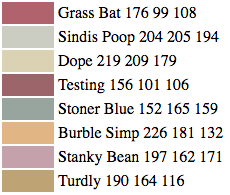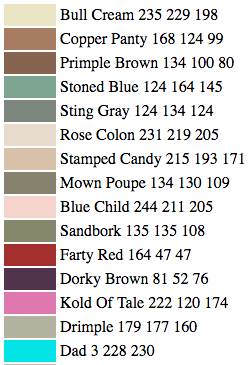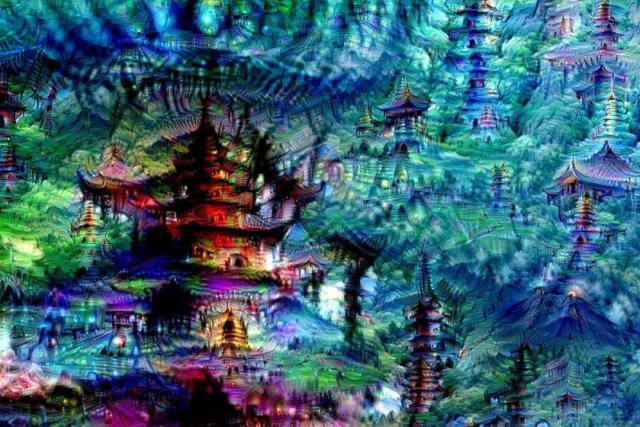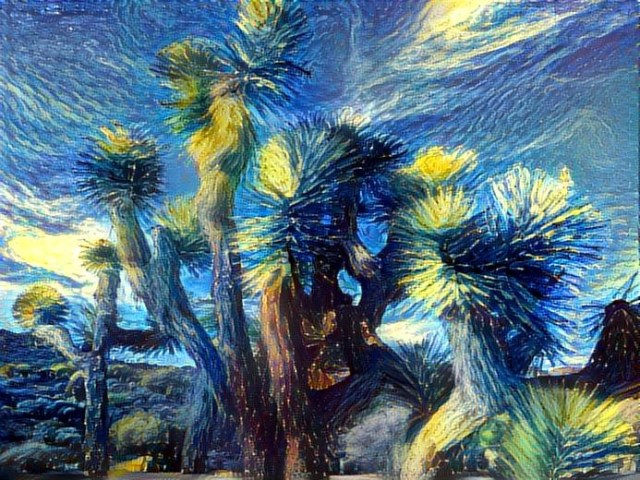
Back in high school, when I was being counseled on where to put my energy as I transitioned into college, many adults scoffed at the art degree I wanted. My grades were weighted with APs and I loved school, so my GPA was actually more than a 4.0. Adults argued that I could certainly find something more practical and lucrative with my grades; they treated art as something expendable, a last resort. That’s not what art is at all. Now, more than a decade later, I am so glad that I got two degrees in art. Because as automation and Artificial Intelligence can do more and more of a person’s job, I joke (half-joke?) that my writing career is one of those robot-proof careers. Writing, and the arts in general, can’t be automated. Can they?
I’m sitting, as I type this, in The Hungarian Pastry Shop. It’s famed in these parts of New York City for a lot of reasons, but one is relevant at the moment: New York City’s Go players gather here every Tuesday night. Despite my love of games, I have not yet played this one: an Ancient Chinese board game that seems, to me at least, to be equal parts strategy and art. This month, DeepMind’s AlphaGo Master, a neural network trained to play this deceptively simple yet extraordinarily difficult game, beat Ke Jie, the world’s best Go player, 3-0. It did this after actually learning from the mistakes that lead it to lose one of five games against Lee Se-Dol last year.
Everyone is treating this like the end of humanity. I must admit, the sheer power of AI sometimes freaks me out. You’ve seen me express total skepticism about Amazon’s delivery drones and even Google’s driverless car (in this last case, I’m revisiting my skepticism after driving 20 hours this week while moving). But ultimately, I think our collective fear (mine included) of AI comes from the real possibility that we will program our own cruelty into it. We shit on anything that’s not practical, yet spend most of our free time lapping up all the art and media we can. Our simultaneous dismissal of and seeking out of art is confusing, but points to the idea that any perfect machine we make should be all logic, perhaps to the point of destruction that we attempt to wreak upon ourselves.
Thank goodness this doesn’t seem to be true. While we’ve known for years that AI likes a good cat video, the examples of AI entities showing us their artistic side have reached a critical mass. Perhaps it’s only a matter of time before an AI entity writes Queer Your Tech? Perhaps I should be happy that it’s got the capacity for creativity? Does that mean we are letting computers in on the secret, best parts of ourselves?
These Paint Colors
Janelle Shane makes her neural networks do awesome stuff, like naming death metal bands and ’80s-style action figures. But the funniest (and coolest) thing her neural network has done thus far is definitely creating and naming these paint colors.

It doesn’t matter where I am or how many times I’ve seen this, I laugh out loud EVERY SINGLE TIME gosh I want to paint a bathroom with Stanky Bean.
Since the initial post, Shane has retrained her network a bit:

DAD MAKES ME LAUGH SO MUCH AND I DON’T KNOW WHY.
Dead. I am dead. Follow that Tumblr, just do it.
These Digital Paintings

via Google Deep Dream
Google Deep Dream started from the ground—it learned to identify objects by painstakingly scanning millions of photos, pixel by individual pixel. Then it learned to distinguish those objects from each other. Then it learned to group objects and output them into these trippy digital paintings, teaching us more about what neural networks “see” when they look at an image. The results are so idiosyncratic that Deep Dream has had its own art show. You, too, can upload an image to the Deep Dream Generator and see what a neural network sees when it looks at your photo. If that’s too creepy for you, you can take a look at the greatest hits gallery. Here, I did it with one of my photos from Joshua Tree. It thinks Joshua Trees are peacocks.

Since Deep Dream happened in 2015, they’ve also released Deep Style, which does the same sort of thing but applies an image style to the dream. It’s smarter, so the results are less weird. Here’s the same image, painted in the style of Starry Night.

These Classical Symphonies
There’s a new classical composer on the scene, and that composer’s name is Aiva (which stands for Artificial Intelligence Virtual Artist). And Aiva’s symphonies and piano solos are being used in film, ads and games. With the release of Aiva’s first album, Genesis, it’s the first AI to be internationally recognized as a composer. Aiva retains the copyright to all the songs…under its own name. The album is MUCH MUCH better than that weird AI Christmas song. Listen here:
Aiva does still need a bit of human help in post production, but onto an AI who had actual humans perform its work—
These Short Films
You may have heard of Sunspring, a film written by an AI who named himself Benjamin. Directed by Oscar Sharp, that shit GOT MADE. Here it is:
The same folks have released a follow up, which is a collaboration between human and artificial intelligence. It definitely wrestles with what it means to be an artist in the age of AI:
Want to play with some AI yourself? Here you go. And if you know anyone who can help me train a neural network to write a Queer Your Tech, EMAIL ME because I am so so curious.



This article gave me so many POI feels…
https://m.youtube.com/watch?v=HkvukotSSms
I LOVE THIS STUFF SO MUCH.
I think I posted this here once before, but here is a fun website where you can do line drawings and an AI program turns them into various things including most importantly cats:
I think of art as a product of human experience; since AI’s aren’t human they don’t create art.
They might become the next favourite tool or medium for artist creativity though.
But they are a product of the human experience of making an AI in order to make art :)
Yep, a new tool/medium for artists to create with.
What about the paintings by Koko and other gorillas? They’re definitely not human, yet arguably producing art.
Good point! I didn’t know about Koko and other apes producing art.
I still think art requires the ability to experience at least; I believe all living things experience, but I doubt any algorithm is capable of knowingly and skillfully capturing and conveying an experienced feeling without the aid of a living artist providing the key creative input. This is what I was really trying to convey.
‘AIrt’?
Wow. I must really have been under a rock because I had no idea.
Here are two things I’ve done artistically with the deep style algorithm: illustrations for a haiku collection and (nearly) daily fine art nudes.
I think the idea of real AI scares me because we don’t even know how to stop oppressing, marginalizing, and killing one another. This is awesome though. Thanks, Ali!
This is so cool! Also, I love the Hungarian pastry shop!
That “Dad” color is around the same color as the shirt someone wore every day at A-Camp this year (the shirt read “My favorite people call me Dad”). Coincidence? I THINK NOT!
I used to work for a company that ghost-wrote search engine-optimized blog posts for corporate websites, and although the writers were all Real Humans (as far as I know…), the process was so formulaic that I doubt it would be particularly hard to “teach” to a neural network. Basically we had a list of keywords for each client, ran the keywords and their variants through Google News and/or industry-specific news sites, found a few different articles/reports/press releases/etc. (collectively referred to as “sources”), and cobbled together “unique” content by rewriting excerpts from those sources and periodically throwing in keywords, calls to action, or tie-backs to the products and services offered by the company for which we were ghost-writing. (Soooooooo glad I quit that job ASAP.)
Tag urself I’m Stoner Blue
As we move closer to 2023, there are several key trends that will shape the intersection of AI and science. First, there will be increased attention to the application of AI to solve real-world problems. For example, researchers are using machine learning algorithms to develop systems that can accurately predict diseases based on medical scans or detect cancers with greater accuracy than humans.
Medical advancement is not the only area where AI is showing potential. In other scientific fields, AI also plays an important role. For example, in astronomy, researchers use AI to analyze vast amounts of data from space, automatically detect new objects, and classify galaxies. In the field of climatology, AI can help predict climate change and develop sustainable solutions to deal with global environmental challenges.
Thank you for this information!! I also want to share information with you that may be useful for you. If you’re looking for AI solutions to enhance business efficiency, you can explore the expertise of AI and Machine Learning Development company. Their specialists can provide top-notch AI solutions tailored to your specific business requirements, facilitating growth and productivity.
This article beautifully illustrates how ChatGPT and other AI technologies are transcending traditional creative boundaries. The fusion of AI with artistic expression, from painting to composing music and crafting movies, is awe-inspiring. It’s remarkable to see how ChatGPT’s understanding of artistic concepts and styles contributes to these endeavors. As we witness the emergence of AI as a co-creator, it’s clear that the future of art holds infinite possibilities, where technology like ChatGPT acts as a brushstroke of innovation on the canvas of human imagination. If you want to try ChatGPT in Netherlands, you can visit here: https://gptnederlands.nl/